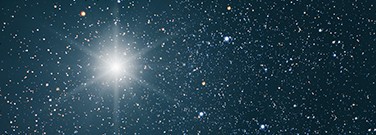Compared to Similar Stars, the Sun Is Magnetically Mellow
By Sadie Laurie
The Sun is essential for life on Earth. Without it, our planet would be a gigantic ball of frozen rock. It provides warmth, weather, and energy for the plants that we use for food and that produce oxygen for us to breathe. It’s important for scientists to understand what happens on the Sun and how that may change in the future, because it directly impacts our ability to thrive.
That’s why a team of international researchers recently studied the Sun’s magnetic activity. They found that compared to other stars in the universe, the Sun lags behind in the area of magnetism. Their results were published in Science.
The Magnitude of Magnetic Activity
When the Sun (or another star) is magnetically active, it produces more frequent solar flares, coronal mass ejections, sunspots, and bright spots. These fluctuations in the Sun’s magnetic field cause energy bursts and even explosions that send dangerous particles and radiation toward Earth.
Thankfully, the Earth’s atmosphere protects living creatures from these threats, but our technology — that we depend on for our modern lives — is not protected. These solar storms can damage satellites and power grids, leaving whole cities without power for weeks or months. For other stars, the occurrence of magnetic events affects the habitability of orbiting exoplanets.
Star Light, Star Bright
Magnetic activity also causes a star’s brightness to vary. In the study led by Timo Reinhold of the Max Planck Institute for Solar System Research in Germany, the researchers investigated how typical the Sun’s variability is compared to other solar-like stars. They analyzed four years of data —2009 to 2013 — gathered from the Kepler space telescope and the Gaia spacecraft, measuring the differences in brightness of 369 Sun-like stars.
The stars’ ages, chemical makeup, temperatures, and surface gravity were similar to those of the Sun. Their rotation rates were also comparable in one group of stars. On average, around its equator, the Sun rotates on its axis once every 24 days.
Reinhold and team also researched 2,898 stars whose rotation rates could not be detected. In most cases, the stars with well-determined rotation periods showed higher fluctuations in brightness, meaning that they were considerably more active than the Sun. Many were five times more variable than the Sun was during the last 140 years.
Gaining Momentum or Midlife Crisis
The group has different interpretations of what the results mean. Because there could be things we don’t yet know about stars with known and unknown rotation periods, the team was unable to form definitive conclusions from their research.
One idea is that the Sun may be experiencing a “midlife crisis” and entering into a calmer phase of life, according to Lisa Grossman, author of the Science News article “The sun is less magnetically active than similar stars, and we don’t know why.”
Alternatively, the Sun may be in a docile period and could become as active as its stellar sisters in the future, according to Reinhold. It’s possible that “the sun did not reveal its full range of activity over the last 9,000 years,” he said. “The sun is 4.5 billion years old; 9,000 years is nothing.”
The study’s co-author agrees, "It is just as conceivable that stars with known and Sun-like rotation periods show us the fundamental fluctuations in activity the Sun is capable of," said Alexander Shapiro of the Max Planck Institute for Solar System Research, as reported in a ScienceDaily press release.
But scientists believe there is no need to worry. In recent years, the Sun has been only mildly active and has not shown signs of hyperactivity. Predictions for the next 11 years suggest that magnetic activity levels will not be changing anytime soon.
Discussion Questions
- What would happen to our planet if the Sun became magnetically active? How would that affect your life?
- Do you know of any exoplanets? What are they like? What can you tell about stars that may be near them?
Vocabulary
- Exoplanet
- Solar flare
- Coronal mass ejection
- Sunspot
- Hyperactivity


